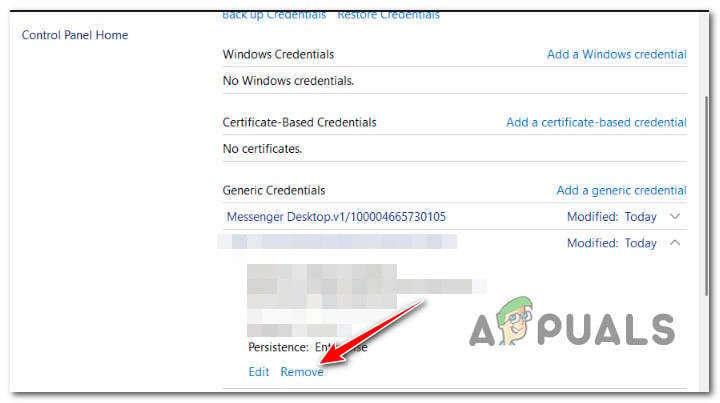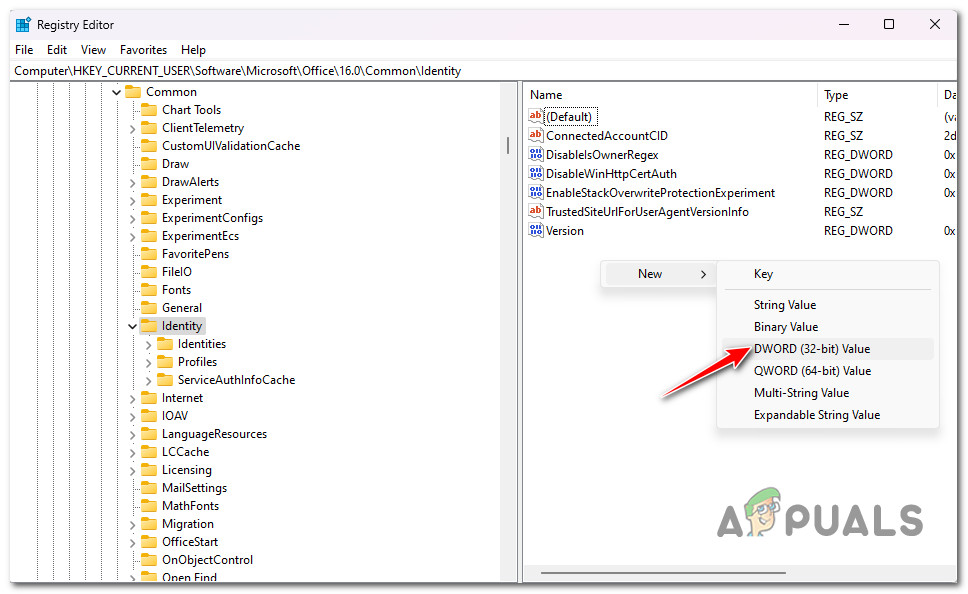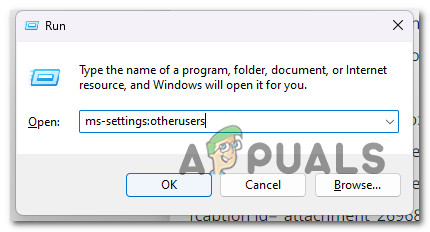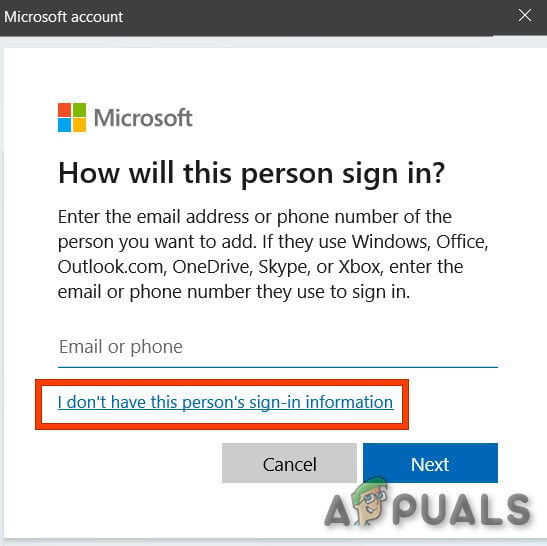[FIXED] Can’t Sign in to Microsoft Office/365 on Windows?
Some Windows users complain that they suddenly cannot log into any Office 365 application. Most affected users report that they don’t get an error, but the system doesn’t display the credentials window where the password must be inserted. This issue is confirmed to occur on both Windows 10 and Windows 11.

We’ve dived into the root causes of this issue and discovered several different potential causes that might be directly or indirectly triggering this issue:
- Cached MS Office Credentials – If you type in your Office 365 username but aren’t given the option to insert the password, chances are the problem is caused by a credential inconsistency. Use the Credential Manager utility to ensure there isn’t any cached data related to your Office 365 account.
- Modern Authentication is enabled – In case you can’t get past the password field, the issue might be indirectly caused by the newer modern authentication protocol that Microsoft has recently deployed. To avoid this issue, you migrate back to the old legacy authentication using Registry Editor.
- Corrupted Windows Profile – If you recently migrated to Windows 11, you might start to experience this problem when you first attempt to sign in with your Office credentials. Other users experiencing the same issue have confirmed that they managed to fix the problem by migrating to a local account.
- System file corruption – If you’re also experiencing different weird issues when logging in to another type of app, chances are you’re dealing with some kind of system corruption. The easiest way to fix these is by performing repair or clean installation procedures.
Now that we have gone over every potential reason why you might see this problem occurring on your Windows computer let’s explore a series of confirmed fixes that other affected users have used successfully.
1. Remove MS Office Stored Credentials
Looking at the official Microsoft explanation, it’s clear that one of the most frequent causes for this error is an inconsistency affecting the local credential cache that Windows maintains via Credentials Manager.
According to other users that have experienced this issue, saved credential data might prevent the sign-up window of Office 365 from displaying the password field because it’s already ‘stored.’ However, if you’re dealing with a sign-in glitch, the password never gets inserted automatically, so you cannot sign in.
If a stored credential is at the root of this issue, you should be able to treat the issue entirely by cleaning your Credential Manager out of every mention of Microsoft Office and Microsoft 365.
Note: This fix is confirmed to work on Windows 11 and 10.
- Press the Windows key + R to open up a Run dialog box.
- Next, type ‘control.exe /name Microsoft.CredentialManager‘ inside the text box, then press Ctrl + Shift + Enter to open up Credential Manager with administrative privileges.

Opening the Microsoft Credentials Manager via Run box - At the User Account Control (UAC), click Yes to grant admin access.
- From the main Credential Manager screen, click on Windows Credentials from the menu on the left.
- Next, scroll down through the list of Windows Credentials and locate any Generic Credentials belonging to Microsoft Office.
- Once you locate them, click on them once, then click on Remove from the context menu that just appeared.

Remove from the context menu that just appeared. - At the confirmation prompt, click Yes to confirm the removal of the generic credential associated with Microsoft Office.
Note: Remember that you might have multiple credentials linked with Microsoft Office and Microsoft 365. Remove everything. - Once every Office-related credential is removed, reboot your PC and attempt to sign in to Office 365 again.
If you still can’t get the password field to display, try the next fix below.
2. Disable Modern Authentication
The modern Authentication that the newer Office 365 iteration uses by default might also be the root cause of your inability to sign in with your account.
Note: Modern authentication provides more security for user authentication and authorization. It is available for Office 365 hybrid installations of the on-premises Exchange server and Skype for Business server, as well as split-domain Skype for Business hybrid deployments.
However, unless you use it in an enterprise environment where security is paramount, you can disable modern authentication and go for the legacy auth without fear of exposing your system.
Several users who disabled Modern Authentication for their Office 365 environment have confirmed that their sign-in issues went away completely.
If you want to replicate this confirmed fix, follow the steps below:
- Press the Windows key + R to open up a Run dialog box.
- Next, type ‘regedit’ and press Ctrl + Shift + Enter to open up a Run dialog box.

Open the Registry Editor - At the User Account Control (UAC) prompt, hit Yes to confirm admin access.
- Once you’re inside the Registry Editor, navigate to the following location using the vertical menu on the left:
HKEY_CURRENT_USER\Software\Microsoft\Office\16.0\Common\Identity
Note: You can get to this location manually or paste the full path above in the nav bar (up-top) and press Enter to get there instantly.
- Select the Identity key from the left-hand pane, then move to the left pane and right-click on a space.
- From the context menu that just appeared, click on DWORD (32-bit) Value.

Create a DWORD value - Once the new DWORD value has been created, name it EnableADAL and press Enter to save the changes.
- Double-click on the newly created EnableADAL window and set the Base to Hexadecimal and the Value data to 0.

Configure the EnableAdal screen - Click Ok to save the changes.
- Close the Registry Editor and reboot your PC to allow the changes to take effect.
Open any Office application and try the sign-in procedure once again.
3. Create a new Windows Profile
We’ve learned that one of the lesser-known potential reasons for this Office 365 problem is some sort of corruption that comes from your Windows profile.
Users who were having trouble viewing the password field have reported that the problem has been resolved after switching to a local Microsoft account.
Note: Applying this strategy will delete any contaminated dependencies connected to your active user profile.
As soon as you open a native Windows application, sign in using the newly created local user account for your Windows installation by following the steps below:
- Press the Windows key + R to open the Run dialog box.
- Type “ms-settings:otherusers” into the text box that just appeared, then press Enter to get to the Family & other people tab of the Settings app.

Other users - Scroll down to the Other users option on the Family & other users page and click Add someone else to this PC.
- Select “I don’t know this person’s sign-in information” from the following menu to create a local account.

Don’t have this persons sign in info - Select Add a user without a Microsoft account on the following screen after signing in with your Microsoft account.
- Set up the new account’s username, password, and security questions.
- After that, restart your computer and sign in using the newly created account the next time it boots up.
Attempt to sign in with your Office 365 account and see if the problem is now fixed.
4. Perform a repair install
If you can still not use the Microsoft Office programs after logging into Office 365, you are likely experiencing a serious system file corruption problem.
By doing an in-place fix (repair install) or a clean installation, other users who have encountered the same problem have done so successfully.
A clean installation is a simpler option, but the main disadvantage is that you cannot preserve your data – including applications, games, and personal material (unless you back them out first).
If you’re looking for a method to save you from losing data, you should consider employing a repair install procedure. The main advantage is that you get to keep your data, including applications, games, personal material, and even certain user preferences.





